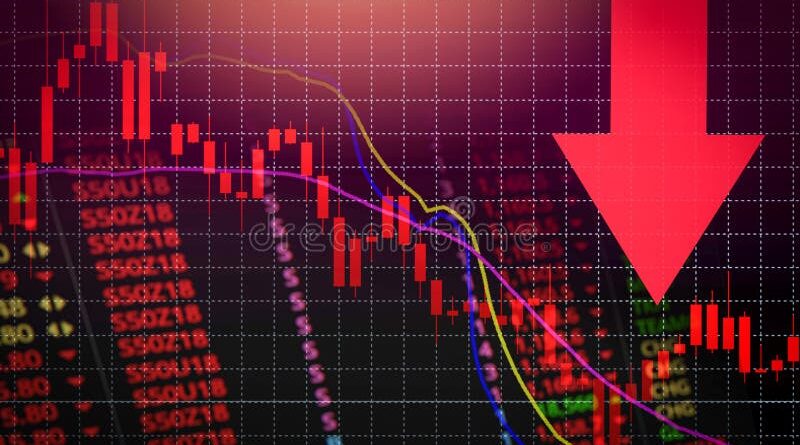US Stock Markets Stagger Amid Job Deficit and New Tariffs
A sudden dip in the United States stock markets occurred this past Friday, triggered by a disappointing employment update and the introduction of fresh tariffs as decreed by President Donald Trump. These developments have intensified the financial community’s apprehensions regarding the potential economic implications. An unexpected job deficit came to light in July: employers added only 73,000 jobs to the economy, falling short of expectations, causing the unemployment rate to escalate to 4.2%.
The recently revealed tariffs, aimed at a number of countries, have ignited worries about a broader, more severe economic disruption. This news was a key factor in the market’s dramatic reaction, leading to a significant downfall across primary United States stock indexes. The escalating unemployment numbers and President Trump’s introduction of heavy tariffs against numerous nations led to a significant plunge in the stock markets on Friday.
The economy was further pushed towards uncertainty by the announcement of the most recent tariffs that came late on Thursday. Investors are grappling with fresh uncertainties regarding the potential impact that these import taxes could have on both the U.S. and the global economy.
As Friday dawned, the ramifications of an underwhelming jobs report augmented the investors’ unease. July saw the creation of merely 73,000 jobs, a notable shortfall from the approximated 100,000 jobs that economists predicted. Moreover, the unemployment rate inched up to 4.2%, a development that seemed to rattle the financial markets.
The impact on the markets was immediately felt with the Dow Jones Industrial Average going down more than 550 points, or approximately 1.3%, during the morning trading hours. Similarly, the S&P 500, which serves as a barometer of the biggest American companies, diminished around 1.5%, and the tech-dominated Nasdaq slipped approximately 2%.
A cascade of economic updates marked the conclusion of an active week in financial news. Investors focused much of their attention on the Federal Reserve’s decision to maintain the status quo with respect to interest rates.
Investors also kept tabs on the finacial briefings from the largest U.S. companies, keen to discern the influence of tariffs on their profit-making prowess. These companies have been providing insights into how the newly imposed tariffs are impinging on their revenue generating abilities.
The drastic drop in the markets on Friday highlights a much unexpected departure from the buoyant sentiment prevalent among Wall Street in the earlier summer months. When President Trump initially publicized his tariff plans in April, financial markets worldwide were sent spiraling.
There was a period, not too long ago, when the President had slowed the implementation of some of these tariffs, leading to a softening of the previously harsher tax rates. This resulted in a collective sigh of relief from global investors who had, till then, braced themselves against his revamped plans.
Yet, this Friday, their issues surged forth once more, further magnified by new signs that these tariffs are having a noticeable impact on the job industry. This lukewarm state of employment is anticipated to amplify demands for the Federal Reserve to consider a reduction in interest rates at their forthcoming meeting in September.
The Central bank’s decision to hold interest rates constant earlier in the week stemmed from fears about rising tariffs exerting more pressure on the rising prices. While the tariffs may have initially been perceived as a short-term setback, their role in shaping long-term economic considerations is increasingly drawing attention from analysts.
The impact immediate and swift, the markets were taken by surprise. The relentless swiftness and firmness of these tariffs, combined with the weaker job data, is causing investors to rethink their strategies.
Some experts believe, however, that this situation should be seen as an opportunity. They argue that cautious market behavior, bolstered by thorough analysis of the ongoing economic shifts, could turn these apparent threats into opportunities.
The financial community is keenly watching the drama unfold, waiting to see whether the aggressive approach to trade will harm the U.S. in the long run or if it will ultimately lead to a more reciprocal and fair international trade system. What’s evident at the moment is that turbulence in the markets is something that investors may have to get accustomed to.
For now, the bigger question that is playing on everyone’s mind is how these worrying developments are going to influence the Federal Reserve’s decisions in future. Will they hold firm to their current position, or will they bend to the pressures of the market’s current declining trend? Only time will tell.



